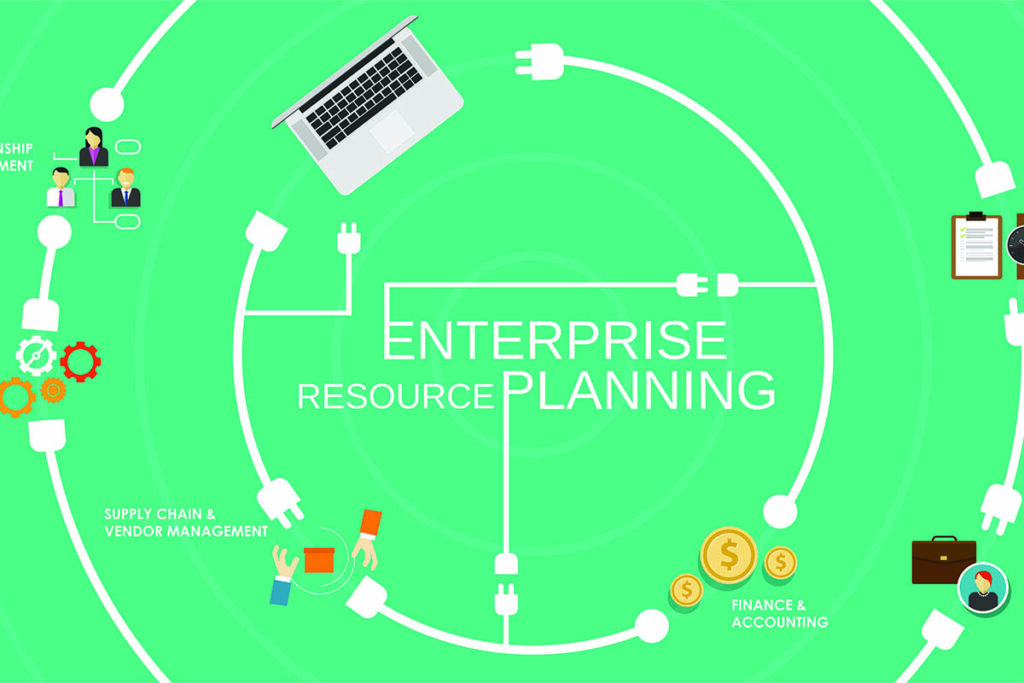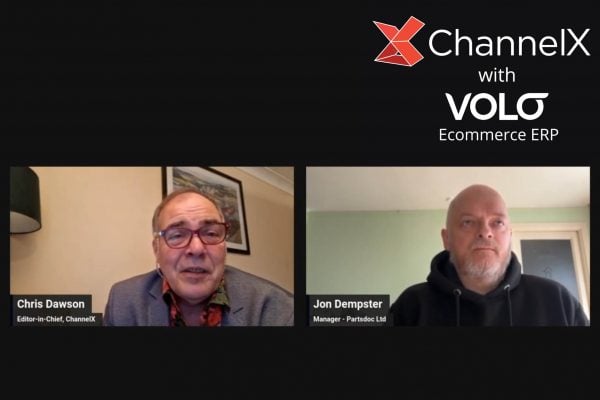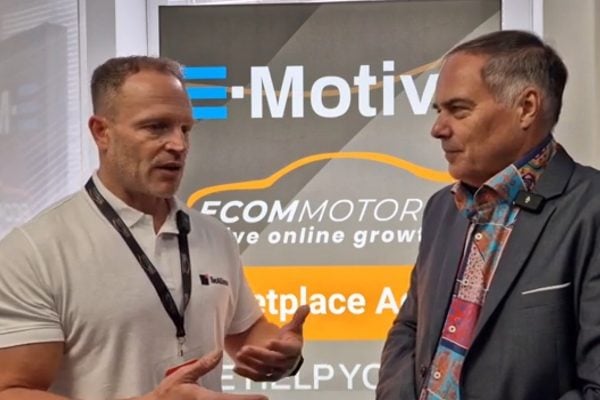TLDR: Implementing an eERP (ecommerce ERP) system will take anything from weeks to years, and cost you from 5 figures to 7 figures. It depends on you, your size, your requirements and your provider.
Paul ‘Dilge’ Dilger, CEO of Volo Commerce, explains the parameters, runners and riders in an eERP project.
Want to hear from someone that’s been there and done it? Watch our interview with Jon Dempster of Partsdoc to discover how an eERP has revolutionised their business.
What Factors Govern an eERP Project?
In an earlier post on eERP we introduced the concept of eERP, why you might need one, and made some general recommendations about what type of eERP system might suit what size of ecommerce business.
Put simply, your requirements are the key factor that determines the best eERP solution for you, and the time and money you’ll need to invest. And how you approach change management is the key factor determining the likely success of the project. More on that part later.
Never one to shy away from a generalisation, I offer the following considerations. The larger your ecommerce business (and/or the larger your total retail business, including traditional retail):
- The more likely you’ll consider an ‘on-premise’ solution (although I would argue that all but the largest retailers will be thinking cloud deployment is the way to go, since online is the vector for ecommerce)
- The more methodical your approach to the project will need to be
- The more likely you’ll want customisations to the standard system
- The more time you’ll need to allow to ensure a successful adoption
- The more money you’ll need to budget
Deployment and Business Model
With an on-premise solution, you buy a license to use the ERP software, and it and your data run on your IT systems and are managed by your IT team. Managing upgrades to the ERP software, which includes deciding if you’re going to upgrade and figuring out if an upgrade will conflict with any area of your own solution, is usually your responsibility. You’ll typically pay the annual license fee up front – which could be based on sites, servers, or users – and pay further amounts for maintenance, support and upgrades.
With cloud-based eERP solutions, your data is hosted and the responsibility of your eERP provider (or you could have it hosted by a third party provider). Your data might be on its own server, or on a dedicated database, or on a shared database with other customers, depending on how much data you have, your requirements, and how your provider works. You’ll typically pay monthly, with no up-front license fee, and this might be a SaaS model or a subscription- or utility-based model where you’re paying for how much ecommerce business you’re putting through the system (although this tends to be the model favoured by providers who are more focused on the ecommerce space than the eERP space).
Approach
The other cost you need to scope out is the work to get the project up and running. You’ll hear different providers use terms like set-up, onboarding, implementation, and so on, and this is usually an agreed amount of professional services to cover tailoring the deployment to your requirements, installing it and enabling your staff to use it. The smaller the project, the more likely you’ll be asked to pay this fee in total, up front. The larger the project, the more the tendency to split the fee into tranches over time.
I mentioned in the previous post in this series that the better providers will work closely with you to scope out as much detail as possible in this ‘needs analysis’ phase. This isn’t just altruism on their part; they’re also trying to get an understanding of where they can demonstrate that they’re uniquely adding value to your project. We’ve seen some ERP providers send out eye-wateringly detailed questionnaires, but what we’ve also found is that the more detail you get into in this critical stage, the fewer bumps in the road and course corrections there are during the implementation phase.
If you’re happy to reengineer your own business processes around the eERP system you’re thinking of investing in, then your customisation and integration costs will be minimal to none. Many ecommerce businesses, however, consider themselves unique and so they may want to pay for degrees of customisation of the software to automate the ways they work.
They may also want to integrate other specialist software to the eERP. This will depend on the other systems they already have in place and want to retain, their philosophical approach (one provider is one provider to deal with versus working with knitted ‘best of breed’ ‘point solution’ providers) and the amount of coverage that the eERP provider can offer. The budget for this bespoke work will vary according to how much customisaton is needed, which the eERP provider may do itself, or which you may want to contract out to a specialist systems integrator.
If you’re participating in a tender process, it can often work well if a provider you trust helps you build the tender document with you. Indeed, they can do much of the workload, just beware that they might also be tempted to tilt the tender document detail to their strengths. That said, the act of preparing a tender document helps you think through and articulate your requirements and is a useful base-covering checklist.
Time (and Time Management)
It is possible to complete an eERP project in two months, but that’s typically for a smaller project, involving a handful of staff, and little to no customisation, with all data in good shape and no needed re-work, optimisation or extensive re-mapping to the eERP system. At the other end of the spectrum, we’ve seen the largest implementations take several months or even years to complete, and with that kind of timeframe you run the risk of the requirements and key personnel being substantially different or even unrecognisable from when you started the project.
The projects we tend to get involved in are three-to-nine months long, by which time the customisation work is done, the data is in good shape, the implementation is rolled out, the staff are fully up to speed and have adopted the new processes, and the business is fully ramped in a live environment. Here’s how the time might break down in that mid-range:
- 1 month to scope out the requirements
- 1 month to identify, select, agree terms and contract with the best fit provider
- 2 to 3 months to complete and test the customisations, get the data ready
- 2 to 3 months to complete the training, roll out the solution (often in phases), go live, monitor performance, iron out any wrinkles and measure the new behaviours and results
- Total elapsed time from ‘we need to do this’ to ‘we’ve done this’: 6 to 8 months
The McKinsey findings that around 70% of change management projects fail – and eERP is most definitely in the change management department – is a well-used data point, but in our experience it’s true to say that success depends on a number of factors being in place. Focusing on the right user behaviours that are leading indicators of eERP adoption, using internal role models to champion the new ways of working, reinforcing, rewarding and celebrating the mechanisms of success, involving users in the design and implementation process; these factors take time to incorporate but they’re time well spent and feed into both the length and the success likelihood of an eERP project.
Money
What’s the range of investment for an eERP project? £5,000 – £10,000 is the smallest project we can imagine, and don’t forget that you need to budget for your company size or number of users, the degree of customisation, IT costs, training and enablement, and ‘in life’ costs like support, maintenance and upgrades. Another often-quoted report from 2017 found that the average cost for an ERP project is around £7,000 per user. So, if you’ve 10 users, you’re looking at a fully loaded £70,000, or between £120,000 and £600,000 for the larger end of the typical SME.
Nobody ever spends money on a system unless they want to see a productivity uplift that allows them to scale their business. It’s therefore important to estimate both the investment you’ll need to budget for, and what return you expect to get from that investment, so that you can build the business case for the project within your business. I quite like this guide to calculating the ROI on your eERP project (though you’ll have to part with some of your details to get it). Again, the business model will govern how you phase these payments. Obviously, if you take a parallel approach to implementation where you’re running the old and new systems at the same time, you increase your costs.
The Players
This is not an exhaustive list by any means, and the financial guidelines blur across providers, but these are some of the providers you might see depending on your size and the complexity of your requirements. I’ve used the bands from the first post in this series:
- If you’re doing less than £2m a year, you probably don’t need an eERP yet (although you may already have point solutions in place, like a decent order management system)
- If you’re doing £2m to £25m a year, then a single eERP system is probably going to be a good fit for you. You might look at Brightpearl (owned by Sage®) or Volo Commerce (owned by Vela Software, itself part of Constellation Software), both of which are majorly focused on ecommerce
- If you’re a £25m+ a year business, then you’re probably going to graduate to a larger ERP system with additional functions like HR and manufacturing/production, or maybe you’ll stitch together a range of best-in-class solutions. You might consider Microsoft® Dynamics 365, SageTM, Netsuite® or Infor
- If you’re a mid-sized business doing £50m to £500m a year, or a big business doing £500m+ a year, then SAP® (which also has offerings for the SME), Oracle®, IBM® and Epicor will probably be on your list
(Any glaring omissions here, do you think? Be sure to let us know in the comments below.)
You can find out more about Volo eERP here, or else contact them for a chat.
Further reading:
https://www.silvertouchtech.co.uk/blog/how-much-does-an-erp-implementation-cost/
https://www.erpfocus.com/erp-cost-and-budget-guide.html









